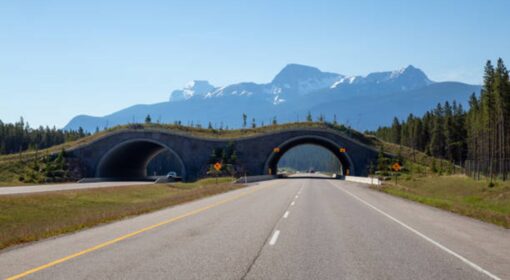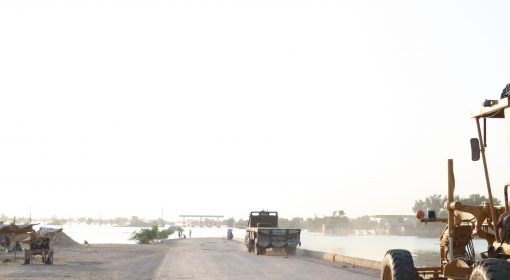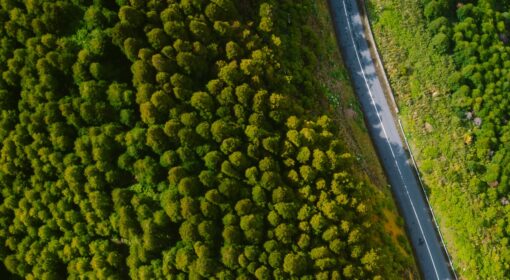
Frank van Steenbergen, Tojiddin Rasulov and Anastasia Deligianni
The challenges of the hydropower reservoirs are many: finding the scarce suitable locations, finding a humane alternative for displaced people, dealing with the interrupted water flow, and mobilizing huge investments.
One other mega-challenge is also to ensure the long-life of the hydropower reservoirs. This means dealing with sedimentation that can reduce the storage capacity prematurely and cause accelerated wear and tear to the power turbines.
Here the roads in the catchments of the hydropower reservoirs are a major factor. Often unseen, they are major source of sedimentation. This applies to almost all reservoirs. Here we give an example of the Roghun Reservoir in Tajikistan, but in every reservoir area there is a need for not just roads, but in particular green roads.
Example: the Roghun Reservoir in Tajikistan
The Roghun Dam on the Vakhsh River is Tajikistan’s single largest investment and expected to be a gamechanger for the country. With initial construction started in 1976 and having interrupted over the decades, construction is now accelerated so to achieve completion by 2030-2035. The power station will have six turbines and generate 3600 MW when completed. The rock fill clay core dam will have a height of 335 metre, making it the world’s tallest dam. The reservoir will have a volume of 13.3 km3, a surface area of 110 square kilometres and will extend up to 60 kilometres. At present the dam is already partly operational with two turbines functioning.
The stated design life is 117 years – which is largely a function of the predicted sedimentation. Several studies have expressed concern over sedimentation rates in the basin, The lower and middle section of the Vakhs River – where the dam and reservoir are located – are characterized by relatively unstable geology. Much of It are highly erodible loess deposits combined with steep slopes and active tectonics, that may be amplified once the reservoir is filled. Sedimentation is a major concern As the reservoir is very long, drawing down water levels and sediment flushing is not straight forward. This makes it even more imperative to control sedimentation in the catchment of the Roghun Reservoir.
Importance of green roads
Roads in Tajikistan have been known to be a major cause of landslides and hence an important contributor to sedimentation. A very significant majority of landslides in Tajikistan occur along or near roads, vastly outnumbering those in areas away from roads. A general estimate is that in reservoir areas 15-40% of sediment loads are road related. This is related to the opening fragile hill sides, concentrating drainage patterns, inducing groundwater seepage, dumping waste material that all undermine the already relatively unstable settings. Roads may also act as a ‘land slide accelerator’ – with the disturbance caused by road development giving rise to further land displacement. Hence safe green road development and management is essential.

Road development is expected to continue and increase in the catchment area of the Roghun Reservoirs Roads will be relocated from the submerged areas. Access roads will be constructed for transmission lines and power station/ reservoir operations. Moreover, with the development of the reservoir, a tourist potential will be unlocked needing road adequate infrastructure as well. There is hence a compelling need to make green road development compulsory in the Roghun Reservoir area – so as the prolong its operational life of the reservoir. The cost of extending or losing one year of operational life amounts to USD 53 Mn. Figures for Nuruk reservoir estimate that as much as 40% of sediment was related to road construction. Green roads in the Roghun Reservoir catchments would concern state roads, non state roads (these are often with little engineering features) and access roads to transmission lines and construction site. The latter a supposed to be low use or temporary, also have few engineering feature, but as withi non-state roads they can be the source of extensive sedimentations.
Recommendations
The following general recommendations would apply for Roghun, but for other reservoirs too.
- Compulsory slope stabilization: Slope stabilization should be built into the road design and should be a prime requirement of the roads. It may not always be possible to get everything right in this respect straight away, so a round of corrective measures would be important in road development. Current measures as seen on the newly constructed Obigor-Noribod roads could be very much improved in this regard, also making extensive use of the knowledge of the Forest Agency. in this respect what is important is:
- better planned and wider coverage vegetation
- using bigger trees at initial planting
- plant native grasses next to the trees and shrubs
- active irrigation or use of water retaining bio-degradable containers, to ensure high survival rates
- consider Vetiver grass (a deep rooted and hardy grass species that has been tested successfully elsewhere)
- use time-tested bio-engineering measures, appropriate to mountain conditions. These measures have a long and successful history in Nepal, but have not been introduced in Tajikistan:
- Protecting gabion walls and riprap: Planting vegetation around and behind stone structures (gabion baskets, riprap) to lock them in place, prevents soil from washing out through the gaps, and reduces undercutting.
- Using soil anchors such as live staking (driving cuttings of for instance willow or poplar into the soil to root and form a living retaining wall)
- Brush layering: Layering live branch cuttings between lifts of soil on fill slopes. The branches will root and reinforce the terraces and slopes.
- Erosion Control blankets: Biodegradable mats made of straw or other fiber that hold soil in place until newly seeded vegetation becomes established
- Using woody soil anchors, such as fascines, brush layers, palisades and live check dams
- Ensure protection from animal movement
Biological slope stabilization is most case effective and economical, which is important given the size of the Roghun Reservoir catchment. It will also improve the aesthetics and biodiversity of the area, which is important given the expected increase in tourism. It is not the only solution. In selected critical areas hard measures (retaining walls, gabions, granite rock with geotextile toe stabilization) will be required too.
- Safe and beneficial road drainage: Adequate road drainage in the shape of culverts and ditches is important. Roads act as impermeable barriers to natural surface water drainage. Without adequately designed and maintained drainage systems (culverts, ditches), water gets trapped and infiltrates the roadbed and the uphill slope, being one trigger for landslides and slope degradation. Stringent attention to road drainage is required, where possible looking at option to beneficially use the water collected in the road drains or passing through culverts, but otherwise at least have safe and preferably dispersed disposal. This would mean:
- Look for water spreading options for water (combined with revegetation) or possibility to fill local water reservoirs
- Use dispersed drainage disposal, to avoid the concentration of erosive flows, considering among others:
- Natural roadside drains over concrete lined side drains where soil conditions allow
- Outward sloping road cambers
- Creating more discharge points/culverts rather than less
- Look at safe disposal locations – avoid gully formation (as is now common) that will create sedimentation and will also undermine roads themselves (as gullies move up)
- Combine road drainage water disposal with chutes, cascades, stilling basins to minimize the risk of highly erosive flows on the downslope hills
- Restore: undertake gully plugging (with vegetative measures) where erosion has already occurred
- Manage groundwater outflows: When roads are developed in mountain areas springs and seeps emerge. The same can be observed in the Roghun Reservoir. These are not always adequately captured, but in several case cause a constant dripping water low – undermining the road alignment and the downstream side slopes. What is recommended:
- Capture and plug the spring and seep outlets – creating local water sources.
- Ensure organized removal of excess spring water
- Additional measures: It is noted that there are some unpaved tracks in the areas as well. These could be seriously damaged – triggering erosion – if they would be accessed by heavier traffic. It is recommended to close entrance to such earthen tracks for heavier vehicles.
These measures would need to be introduced systematically and compulsory. Together they will extend not only the lifetime of these vital assets, but also to create more conducive local living conditions for the people using the catchments of the reservoirs.



